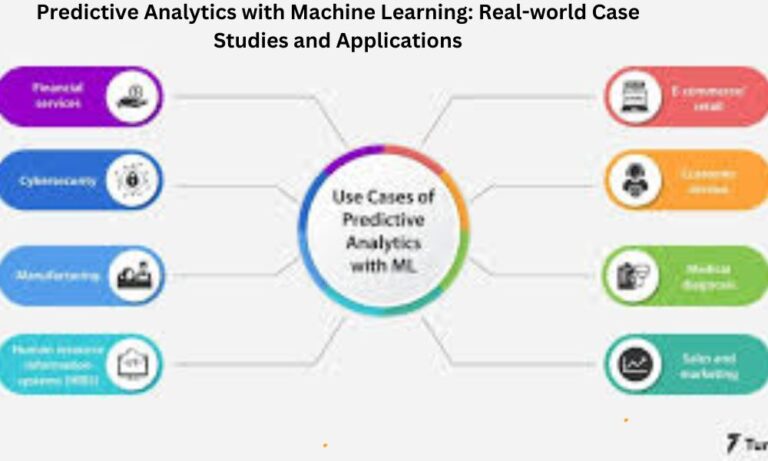Spatial Analysis with SQL: Mapping Your Data
The utilization of spatial analysis has become increasingly vital across various industries. From urban planning to logistics, businesses rely on spatial data to make informed decisions and gain valuable insights into geographical patterns and trends. Spatial analysis the process of examining spatial patterns and relationships, plays a crucial role in understanding geographic phenomena.
By leveraging SQL, a powerful database querying language, analysts can perform complex spatial operations efficiently. In this article, we’ll explore how SQL empowers users to manipulate and analyze geospatial data, paving the way for insightful spatial analysis.
Table of Contents
Understanding Spatial Analysis in SQL
Spatial analysis encompasses a wide range of techniques used to analyze spatial data. With SQL, analysts can perform operations such as geometric calculations, proximity analysis, and overlay operations. SQL’s robust capabilities make it an ideal tool for handling spatial data effectively.
Definition and Scope of Spatial Analysis
Spatial analysis involves the examination of spatial relationships, patterns, and processes. It enables analysts to uncover hidden insights within geographic data and make informed decisions based on spatial trends.
The Power of SQL for Geospatial Data Analysis
SQL’s structured query language provides a standardized method for querying and manipulating data stored in relational databases. With the advent of spatial extensions like PostGIS and Oracle Spatial, SQL has become a versatile platform for geospatial analysis.
Overview of Common Challenges in Spatial Analysis
Despite its benefits, spatial analysis presents several challenges, including data quality issues, computational complexity, and interoperability issues. By understanding these challenges, analysts can develop strategies to address them effectively.
Setting the Foundation: SQL Basics
Before diving into spatial analysis, it’s essential to have a solid understanding of SQL fundamentals. Let’s review some key SQL commands and concepts relevant to spatial analysis.
Recap of SQL Fundamentals
SQL fundamentals include commands such as SELECT, INSERT, UPDATE, and DELETE, which are used to retrieve, insert, update, and delete data from databases. Understanding these commands is essential for conducting spatial analysis in SQL.
Key SQL Commands for Spatial Analysis
In addition to standard SQL commands, spatial analysis in SQL involves specialized commands for working with geometric and geographic data types. These commands enable users to perform spatial queries and operations efficiently.
Importance of Spatial Extensions in SQL
Spatial extensions like PostGIS and Oracle Spatial enhance SQL’s capabilities by adding support for spatial data types and functions. These extensions enable advanced spatial analysis and mapping capabilities within SQL databases.
Mapping Geospatial Data in SQL
One of the primary objectives of spatial analysis is to create meaningful visualizations of geospatial data. In this section, we’ll explore techniques for mapping geospatial data using SQL.
Introduction to Geospatial Data Types in SQL
SQL supports various geospatial data types, including points, lines, polygons, and geometries. Understanding these data types is crucial for storing and manipulating spatial data effectively.
Steps to Create a Spatial Database for Mapping
Creating a spatial database involves defining tables with geometry or geography columns to store spatial data. SQL provides tools for creating, indexing, and querying spatial data efficiently.
Incorporating Geometry and Geography Data in SQL Tables
Geometry and geography data types allow users to represent spatial objects such as points, lines, and polygons within SQL tables. These data types enable spatial analysis and mapping within the SQL environment.
Techniques for Spatial Analysis
Spatial analysis encompasses a diverse set of techniques for analyzing spatial relationships and patterns. Let’s explore some common techniques used in spatial analysis with SQL.
Spatial Queries: Selecting, Filtering, and Sorting Geospatial Data
Spatial queries enable users to select, filter, and sort geospatial data based on spatial relationships and attributes. SQL’s query capabilities allow for precise control over spatial data selection and manipulation.
Buffer Analysis and Proximity Queries
Buffer analysis involves creating a buffer zone around spatial features to analyze proximity and spatial relationships. SQL provides functions for performing buffer analysis and proximity queries efficiently.
Overlay Analysis: Union, Intersection, and Difference Operations
Overlay analysis involves combining multiple spatial datasets to identify common areas, intersections, or differences between them. SQL’s overlay operations enable users to perform complex spatial analyses with ease.
Visualizing Data Through SQL Mapping
Effective visualization is essential for communicating spatial patterns and insights to stakeholders. In this section, we’ll explore techniques for visualizing geospatial data using SQL mapping libraries.
Integration with Mapping Libraries
SQL can integrate with popular mapping libraries such as Leaflet and Mapbox to create dynamic and interactive maps. These libraries enable users to visualize spatial data directly within SQL environments.
Generating Dynamic Maps Using SQL Queries
SQL queries can generate dynamic maps by retrieving and rendering spatial data stored in SQL databases. This approach allows for real-time visualization of spatial patterns and trends.
Customizing Map Visualizations
Customizing map visualizations involves adjusting symbology, colors, and labels to enhance the readability and interpretability of spatial data. SQL mapping libraries offer flexible options for customizing map visualizations to meet specific requirements.
Applications in Various Industries
Spatial analysis has diverse applications across various industries, including logistics, urban planning, and environmental science. Let’s explore some real-world examples of spatial analysis in action.
Case Studies Showcasing Spatial Analysis
Case studies illustrate how spatial analysis can solve complex problems and drive decision-making in diverse industries. From route optimization to site selection, spatial analysis offers valuable insights into spatial relationships and patterns.
Examples from Industries
Logistics companies use spatial analysis to optimize delivery routes and minimize transportation costs. Urban planners use spatial analysis to assess land use patterns and plan infrastructure development projects. Environmental scientists use spatial analysis to monitor and manage natural resources and ecosystems.
Potential Benefits and Insights Gained
The potential benefits of spatial analysis include improved decision-making, increased operational efficiency, and enhanced resource allocation. By leveraging spatial data effectively, organizations can gain valuable insights into geographic patterns and trends.
Overcoming Challenges in Spatial Analysis
While spatial analysis offers significant benefits, it also presents several challenges that need to be addressed. In this section, we’ll explore strategies for overcoming common challenges in spatial analysis.
Addressing Data Quality Issues
Data quality issues such as inaccuracies, inconsistencies, and missing values can impact the accuracy and reliability of spatial analysis results. Implementing data validation and cleansing procedures can help improve data quality and integrity.
Optimizing Performance for Large Datasets
Spatial analysis can be computationally intensive, especially when dealing with large datasets. Techniques such as spatial indexing and query optimization can improve performance and reduce processing times for spatial analysis operations.
Troubleshooting Common Errors and Issues
Spatial analysis often involves complex algorithms and calculations that can lead to errors and unexpected results. Understanding common errors and troubleshooting techniques is essential for conducting accurate and reliable spatial analysis.
Future Trends in Spatial Analysis with SQL
The field of spatial analysis is constantly evolving, driven by advancements in technology and emerging trends. Let’s explore some future trends and developments in spatial analysis with SQL.
Emerging Technologies and Advancements
Advancements in technologies such as artificial intelligence, machine learning, and spatial databases are shaping the future of spatial analysis. These technologies enable new capabilities and insights in spatial data analysis and visualization.
Integration with Machine Learning for Predictive Analysis
The integration of spatial analysis with machine learning enables predictive analysis and modeling of spatial phenomena. By leveraging machine learning algorithms, analysts can forecast future trends and patterns based on historical spatial data.
The Evolving Role of SQL in Spatial Analysis
As spatial analysis continues to evolve, the role of SQL in handling and analyzing spatial data remains crucial. Ongoing developments in SQL spatial extensions and database technologies contribute to the expanding capabilities of spatial analysis.
In Summary: Unveiling Spatial Insights with SQL
In conclusion, spatial analysis with SQL empowers users to unlock valuable insights from geospatial data. By understanding the fundamentals of spatial analysis, mastering SQL commands for geospatial data manipulation, and visualizing data through dynamic maps, analysts can make informed decisions across various industries.
Frequently Asked Questions (FAQ)
How does spatial analysis in SQL benefit businesses?
Spatial analysis in SQL provides businesses with the ability to analyze and interpret spatial patterns, enabling better decision-making. Industries such as logistics, urban planning, and environmental science can benefit from insights gained through spatial analysis.
Can SQL mapping libraries be used for real-time visualization?
Yes, SQL mapping libraries like Leaflet and Mapbox can be integrated to generate dynamic maps in real time. This allows users to visualize spatial data directly within SQL environments, facilitating quick and effective decision-making.
What are the key challenges in spatial analysis, and how can they be addressed?
Common challenges in spatial analysis include data quality issues, performance optimization for large datasets, and troubleshooting errors. These challenges can be addressed through data validation, spatial indexing, and a thorough understanding of spatial algorithms.
How is spatial analysis evolving with emerging technologies?
Emerging technologies such as artificial intelligence and machine learning are influencing the future of spatial analysis. Integration with machine learning enables predictive analysis and the modeling of spatial phenomena, contributing to advanced insights.
What role does SQL play in the future of spatial analysis?
SQL continues to play a crucial role in spatial analysis, with ongoing developments in spatial extensions and database technologies. As the field evolves, SQL remains a foundational tool for handling and analyzing geospatial data effectively.


